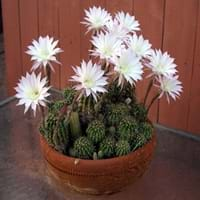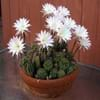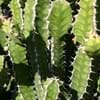Life Span
Perennial
Perennial
Type
Cactus or Succulent
Trees
Origin
North America, South America, Brazil
Asia, Europe, North America
Types
Peanut cactus
Black Ash, Blue Ash, California Ash, Carolina Ash, European Ash
Habitat
Desert, Sandy areas, Semi desert
Forest edges, Hillside, Woods
USDA Hardiness Zone
12-15
3-9
Sunset Zone
12, 13, 16, 17, 21, 22, 23, 24
9, 12, 13, 14, 15, 16, 17, 18, 19, 20, 21, 22, 23, 24
Habit
Upright/Erect
Oval or Rounded
Flower Color
White, Yellow, Red, Purple, Orange, Rose
White
Flower Color Modifier
Not Available
Not Available
Fruit Color
Green, Orange Red
Not Available
Leaf Color in Spring
Not Available
Dark Green
Leaf Color in Summer
Not Available
Dark Green
Leaf Color in Fall
Not Available
Dark Green
Leaf Color in Winter
Not Available
Dark Green
Leaf Shape
Succulent
Oblovate
Plant Season
Not Available
All year
Sunlight
Full Sun, Partial Sun, Partial shade
Full Sun, Part sun
Type of Soil
Loam, Sand
Loamy, Sandy
The pH of Soil
Acidic, Neutral, Alkaline
Acidic
Soil Drainage
Well drained
Well drained
Bloom Time
Spring
Late Spring, Spring
Tolerances
Drought, Dry soil, Full Sun, Heat Tolerance, Rocky Soil
Drought, Pollution, Soil Compaction
Where to Plant?
Container, Ground, Pot
Ground
How to Plant?
Grafting, Seedlings, Stem Planting
Grafting, Seedlings, Stem Planting, Transplanting
Plant Maintenance
Low
Medium
Watering Requirements
Average Water Needs, Do Not over Water, Never Over-water, Water once every two or three weeks, Water when top layer of soil becomes dry
Does not require lot of watering, Medium, Prefer drip-irrigation instead of Over-head watering
In Summer
Average Water
Lots of watering
In Spring
Average Water
Moderate
In Winter
Less Watering
Average Water
Soil pH
Acidic, Neutral, Alkaline
Acidic
Soil Type
Loam, Sand
Loamy, Sandy
Soil Drainage Capacity
Well drained
Well drained
Sun Exposure
Full Sun, Partial Sun, Partial shade
Full Sun, Part sun
Pruning
Remove dead or diseased plant parts
Prune in winter, Prune prior to new growth
Fertilizers
fertilize in growing season, fertilize in summer, Potassium
All-Purpose Liquid Fertilizer
Pests and Diseases
Mealybugs, Scale
Bark splits, Crown gall, Epicormic Sprouting, Woodpecker feeding
Plant Tolerance
Drought, Dry soil, Full Sun, Heat Tolerance, Rocky Soil
Drought
Flower Petal Number
Single
Single
Foliage Texture
Bold
Medium
Foliage Sheen
Not Available
Glossy
Attracts
Hummingbirds
Birds
Allergy
Skin cuts
Not Available
Aesthetic Uses
Beautification, Landscape Designing, Showy Purposes
Not Available
Beauty Benefits
Not Available
Not Available
Environmental Uses
Air purification, Food for insects, Versatility, Very little waste
Air purification
Medicinal Uses
Burns, Heals minor burns, Heart problems, High blood pressure, Wounds
Fever, Liver problems
Part of Plant Used
Leaves
Leaves, Stem
Other Uses
Decoration Purposes, Showy Purposes, Used as Ornamental plant, Used for its medicinal properties
Used as Ornamental plant
Used As Indoor Plant
Yes
No
Used As Outdoor Plant
Yes
Yes
Garden Design
Container, Houseplant, Rock Garden, Wall
Shady Tree, Showy Tree
Botanical Name
ECHINOPSIS
Fraxinus
Common Name
Hedgehog Cactus, Sea urchin cactus
Ash Tree
In Hindi
हाथी कैक्टस
राख पेड़
In German
Igel Kaktus
Esche
In French
hérisson cactus
Frêne
In Spanish
cactus de erizo
Fresno
In Greek
κάκτος σκαντζόχοιρος
δέντρο Ash
In Portuguese
hedgehog cactus
Freixo
In Polish
jeż kaktus
Jesion
Phylum
Tracheophyta
Anthophyta
Class
Magnoliopsida
Magnoliopsida
Order
Caryophyllales
Lamiales
Family
Cactaceae
Oleaceae
Genus
Echinopsis
Fraxinus
Clade
Angiosperms, Core eudicots, Eudicots
Angiosperms, Asterids, Eudicots
Tribe
Trichocereeae
Oleeae
Subfamily
Cactoideae
Not Available
Importance of Echinopsis and Ash Tree
Want to have the most appropriate plant for your garden? You might want to know the importance of Echinopsis and Ash Tree. Basically, these two plants vary in many aspects. Compare Echinopsis and Ash Tree as they differ in many characteristics such as their life, care, benefits, facts, etc. Every gardener must at least have the slightest clue about the plants he wants to plant in his garden. Compare their benefits, which differ in many ways like facts and uses. The medicinal use of Echinopsis is Burns, Heals minor burns, Heart problems, High blood pressure and Wounds whereas of Ash Tree is Fever and Liver problems. Echinopsis has beauty benefits as follows: Not Available while Ash Tree has beauty benefits as follows: Not Available.
Compare Facts of Echinopsis vs Ash Tree
How to choose the best garden plant for your garden depending upon its facts? Here garden plant comparison will help you to solve this query. Compare the facts of Echinopsis vs Ash Tree and know which one to choose. As garden plants have benefits and other uses, allergy is also a major drawback of plants for some people. Allergic reactions of Echinopsis are Skin cuts whereas of Ash Tree have Not Available respectively. Having a fruit bearing plant in your garden can be a plus point of your garden. Echinopsis has no showy fruits and Ash Tree has no showy fruits. Also Echinopsis is not flowering and Ash Tree is flowering. You can compare Echinopsis and Ash Tree facts and facts of other plants too.





